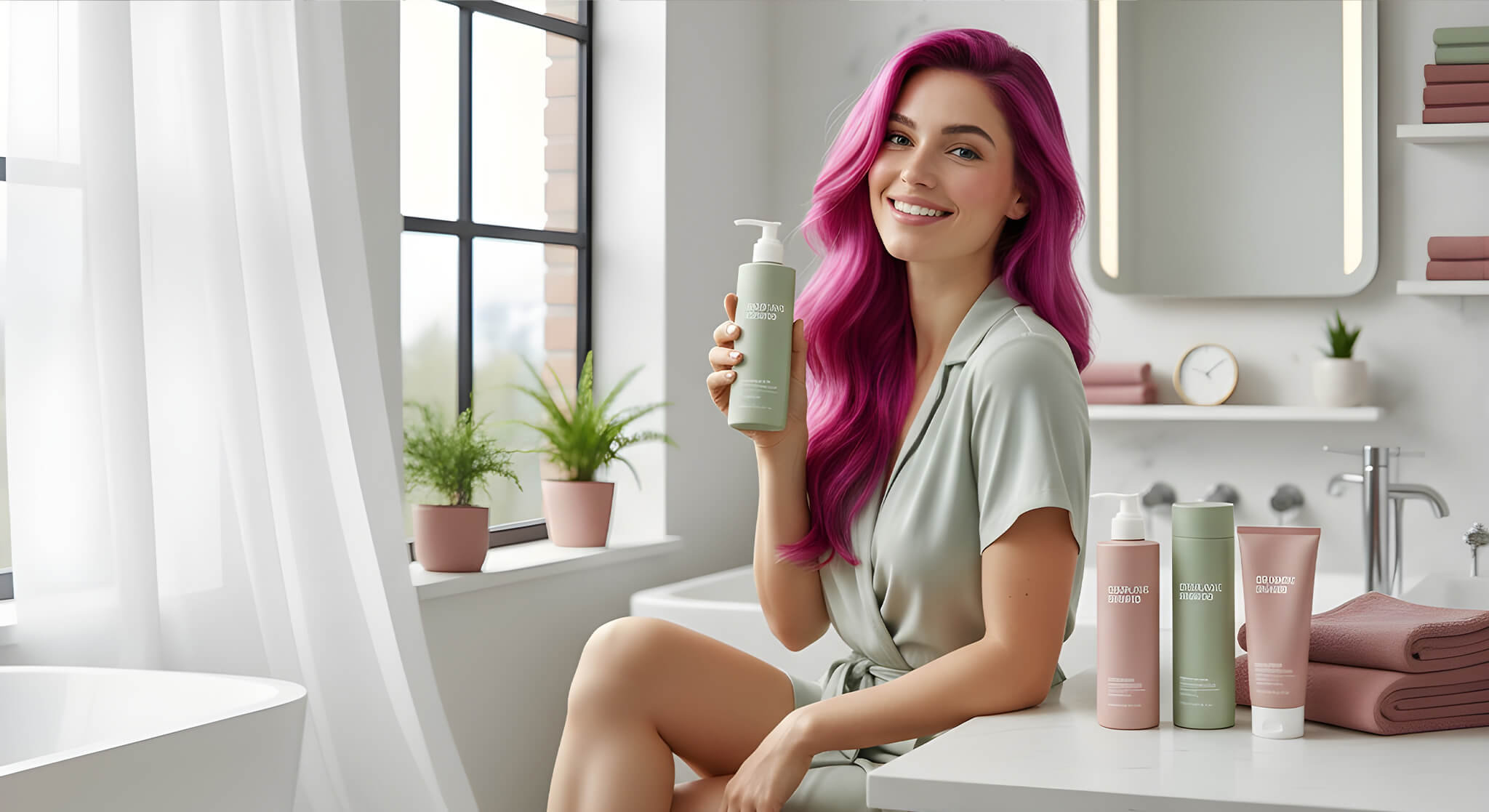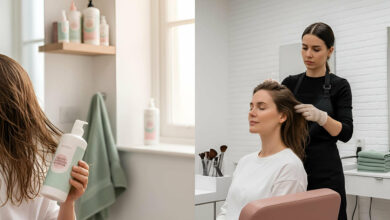How She Doubled the Life of Her Fantasy Hair Color by Changing Her Shampoo
Table of contents
The Autumn Dread: When It’s More Than Just a Few Hairs
Every year, “Sophie” dreaded October. As the leaves began to fall, so did her hair. She would find alarming clumps in the shower drain and in her hairbrush, chalking it up to an unavoidable seasonal shed that left her feeling helpless and filled with Anxiety.
She tried every volumizing Shampoo and topical Hair Strengthening treatment, but nothing seemed to stop the shed. She felt powerless against the season.
But her breakthrough came when she realized the problem wasn’t just the season; it was her response to the season. She discovered that her Seasonal Shedding was being massively amplified by a second, hidden culprit: Autumn Stress. This is the story of how she took back control.
The Science: The “Perfect Storm” of Autumn Hair Loss
To find the solution, Sophie first had to understand the science behind this “perfect storm.”
Culprit #1: The Biological Shed
First, Seasonal Shedding is a real, documented phenomenon. For many mammals, it’s a natural cycle. It’s often a delayed reaction (Telogen Effluvium) where hair follicles that were pushed into a ‘rest’ phase by summer stressors (like high heat and UV exposure) all decide to shed at once in the fall.
These summer stressors, like UV exposure, aren’t the only environmental factors that can compromise hair health leading into the fall. Mineral buildup from hard water is another common stressor that can weaken hair and impact its integrity. If you’re looking to reduce every possible stressor, we reviewed the best shower filters for removing color-stripping minerals and buildup.
Culprit #2: The Stress Accelerator (Cortisol)
Autumn is also a period of high Stress for many. It’s the “back-to-school” pressure, the end-of-year work deadlines, and the rising Anxiety of the approaching holidays. This mental Stress floods your body with the hormone Cortisol.
As a landmark 2021 Harvard study confirmed, a key stress hormone (corticosterone, the equivalent of Cortisol in humans) can directly force hair follicles into a prolonged ‘resting’ state, preventing new Hair Growth.
The “Double Whammy” Effect
This was the key to Sophie’s problem: her natural Seasonal Shedding was being massively amplified by her high Cortisol levels. She wasn’t just dealing with one trigger; she was dealing with two at the exact same time.
Sophie’s 3-Step “Anti-Stress” Hair Rescue Plan
Instead of just treating her hair, Sophie started treating her mind and body first.
Step 1: She Calmed Her Nervous System
She implemented a non-negotiable Night Routine. This included 10 minutes of guided meditation or mindfulness using a free app. This simple act helped to lower her daily Cortisol levels and signaled to her body that it was safe to rest, which in turn dramatically improved her Deep Sleep quality.
Finding the right tool to build this new habit is key. While meditation is one path, integrating positive self-talk can also be a powerful way to reframe anxiety and lower cortisol. For guidance, we tested by Sylvaia: the best daily affirmations apps that make it simple to start this practice.
Step 2: She Nourished Her Resilience
After a discussion with her doctor, she added two key Supplements to her diet during the high-stress autumn months: Magnesium Glycinate to help calm the nervous system, and Ashwagandha, an adaptogen herb known for its ability to help the body manage its stress response.
Step 3: She Supported Her Scalp
To support the follicles she did have and encourage new Hair Growth, she committed to a 2-minute daily scalp massage every time she washed her hair. This simple act helped to boost circulation, delivering more nutrients to the hair roots, and it also physically released the tension she held in her Scalp.
The At-a-Glance Comparison: Her Two Autumns
| Feature | Sophie’s Old Autumn | Sophie’s New “Anti-Stress” Autumn |
| Primary Focus | Panicked (Buying new hair products) | Proactive (Managing internal stress) |
| Cortisol Level | High | Managed |
| Shedding Volume | High / Alarming | Low / Normal |
| Mental State | High Anxiety / Helpless | Calm / In Control |
The Result: How She Broke the Vicious Cycle
The next autumn, Sophie still experienced some minor shedding—because that part is natural. But the alarming, handfuls of hair were gone. The panic was gone. By managing her internal Stress, she had removed the “accelerant” from the fire. Her hair felt stronger, and her Mental Health was infinitely better, as she was no longer in a state of Anxiety about her hair.
The Verdict: You Have More Control Than You Think
Sophie’s story is a powerful reminder that Seasonal Shedding is not always an unavoidable fate. It is often a combination of a natural cycle and a manageable stress response.
This fall, instead of just focusing on your hair, focus on your head. By identifying and managing your unique autumn stressors, you are not only supporting your Mental Health; you are actively investing in the Health and resilience of your hair for the season to come.






